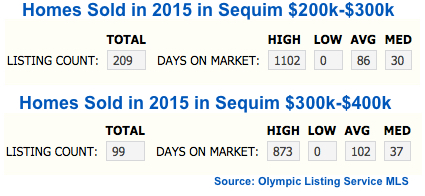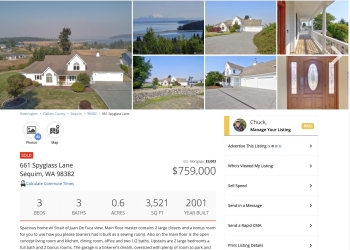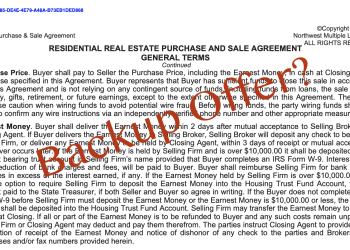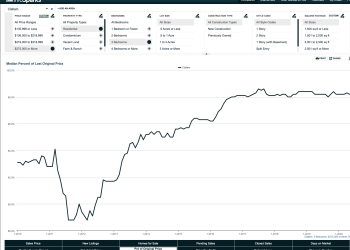“Days on market” (or DOM) is a number that tells you how long a home has been listed on the market. The relevance of days on market comes into play when you decide to make an offer on a listing. The general rule is that a large number, like 276 days on market, gives you as a buyer more power to make an offer below the listing price, and a very large number like 500 or more days on market means you can make a substantially lower offer. But how true is this?

In this graphic, you can see that for the calendar year 2015 homes that sold in the price range of $200,000 to $300,000 were on the market for an average of 86 days, but one was on the market for 1,102 days and it sold also. For homes that sold in the price range of $300,000 to $400,000, the average days on market was 102, but one sold after being on the market for 873 days. And apparently in each price range at least one home sold the very first day it was on the market.
Days on Market: The True Meaning
Days on market influences how we negotiate the price on a property, but let’s look closer at the nuances. A large number of days on market may mean that buyers don’t want it. Buyers may be turned off because of many potential reasons, such as the house may be overpriced, it may have features that are way outside the normal Bell Curve, or it may be in an area that the majority of buyers find unacceptable.
On the other hand, just because a home is the ideal home for the majority of buyers and is in a good area does not mean it will sell quickly. It could be on the market for only 4 days and sell, or it could sell on the 276th day. In a small real estate market like Sequim, the inventory is small but the buyers come in small numbers, too.
Days on Market: Unique to Each Market
This means that a retired couple coming from Santa Barbara will come when they come, which has little to do with the Sequim real estate market. If their ideal home has only 4 days on market when they just happen to arrive, it will be sold. But maybe that same house has been on the market for 189 days when they just happen to arrive and make an offer. This is the nature of a small real estate market and a small number of buyers.
Some homes, especially expensive luxury homes, have a smaller number of unique qualified buyers coming to Sequim, so expensive homes will normally have a larger number of days on market than other homes.
It is also important to distinguish different real estate markets. Days on market in a hot Seattle market will have a slightly different meaning for buyers than it does in a rural market like Sequim’s. And one last nuance. For the home that has as many as 600 or 800 days on market, there are two main possibilities. The first is that that one unique buyer has not arrived yet, and the second is that the seller may be stubborn and refuses to see the reality that his home may be grossly overpriced.
The answer for a specific property requires a great deal of familiarity with the local market, with similar homes, and prices. For that, it helps to have a local Realtor who has the experience and the ability to make the distinctions necessary to determine true fair market value for a specific home, regardless of days on market.
Last Updated on September 6, 2019 by Chuck Marunde


































